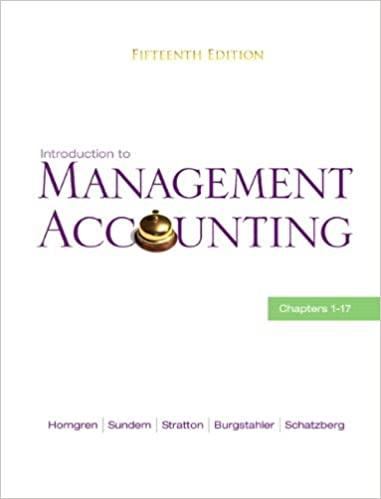Answered step by step
Verified Expert Solution
Question
1 Approved Answer
In this video we will calculate the dividends paid per share for different classes of stock. We are provided with information about the share distribution
In this video we will calculate the dividends paid per share for different classes of stock. We are provided with information about the share distribution and stock classes of Wallace, Inc. Using this information, we are required to calculate the dividend per share that was paid for each stock class for four years. The two classes of stock are preferred stock and common stock. Remember that when dividends are distributed, the preferred stock shareholders are paid first; then the remaining amount is distributed among the stock shareholders. Let's start by listing the total dividend paid in the first year. The dividend paid in the first year is $24,000. Since we have to distribute dividends to the preferred shareholders first, we must calculate the amount that should be distributed to the preferred shareholders. It is calculated by multiplying the number of shares by the given percentage of par. So by taking the product of 30,000 shares, 2%, and $90, we arrive at $54,000 -- the amount to be distributed to the preferred shareholders. In this case the dividend declared was $24,000. And thus from the total amount due of $54,000, only $24,000 was paid to the preferred shareholders for the first year. As these are cumulative preferred shares, the shareholders are entitled to receive the amount in arrears at some future date. The amount in arrears is calculated by deducting the amount paid in the first year from the amount that the preferred shareholders should have received. So by deducting $24,000 -- the amount paid in the first year -- from $54,000 -- the amount due to the preferred shareholders, we arrive at the dividends in arrears for the second year of $30,000. Next let's calculate the amount of the preferred dividend per share. To calculate this, we divide the total preferred dividends for the year by the preferred shares outstanding. So for the first year, by dividing the total preferred dividends of $24,000 by the 30,000 preferred shares outstanding, we determine that the preferred dividend per share is 80 cents. There were no dividends left for the distribution to the common shareholders. So the common dividend per share for the first year is zero dollars. Next we list the dividend of $81,000 for the second year. Note that the amount in arrears of $30,000 from the first year is deducted from the $81,000, the total dividend for the year. This leaves $51,000 available for dividends in the second year. As discussed earlier, every year the preferred shareholders should be paid $54,000. So after paying $51,000 for the second year, the amount in arrears carried forward to the third year is $3,000, calculated by deducting $51,000 from $54,000. Next we will calculate the dividends per share for the second year. We see that the amount of the total dividend paid was $81,000 and the preferred shares outstanding 30,000. So by dividing these two amounts, we determine the preferred again per share to be $2.70. Similar to the first year, since there were no dividends left for distribution to common shareholders, the common dividend per share for the second year is zero dollars. Now for the third year we will list the total dividend declared of $92,000. Let's first add the dividends in arrears of $3,000 from the second year and the $54,000 due for the current year. The sum, $57,000, is the total amount paid to preferred shareholders in the third year. By dividing this $57,000 by the outstanding number of shares of 30,000, we determine the preferred dividends per share to be $1.90. Next for this year, by deducting the total preferred dividends from the total dividend declared, we determine that $35,000 is available for dividends to the common shareholders. So to determine the common stock dividend per share, we divide the $35,000 by the common shares outstanding of 125,000, arriving at the dividend per share of 28 cents. Finally, for the fourth year we list the total dividend declared of $139,000. Since there were no dividends in arrears carried forward, there will not be a deduction for dividends in arrears. Then we list the amount to be paid to the preferred shareholders of $54,000. Next, by dividing the $54,000 by the 30,000 shares of outstanding preferred stock, we get the preferred stock dividend per share of $1.80. Similar to the third year, the difference between the total dividend declared, $139,000, and the total preferred dividend of $54,000 is the amount available to the common shareholders, $85,000. To calculate the dividend per share of common stock, we divide the $85,000 by the common shares outstanding of 125,000, arriving at the dividend per share of 68 cents
Step by Step Solution
There are 3 Steps involved in it
Step: 1

Get Instant Access to Expert-Tailored Solutions
See step-by-step solutions with expert insights and AI powered tools for academic success
Step: 2

Step: 3

Ace Your Homework with AI
Get the answers you need in no time with our AI-driven, step-by-step assistance
Get Started


